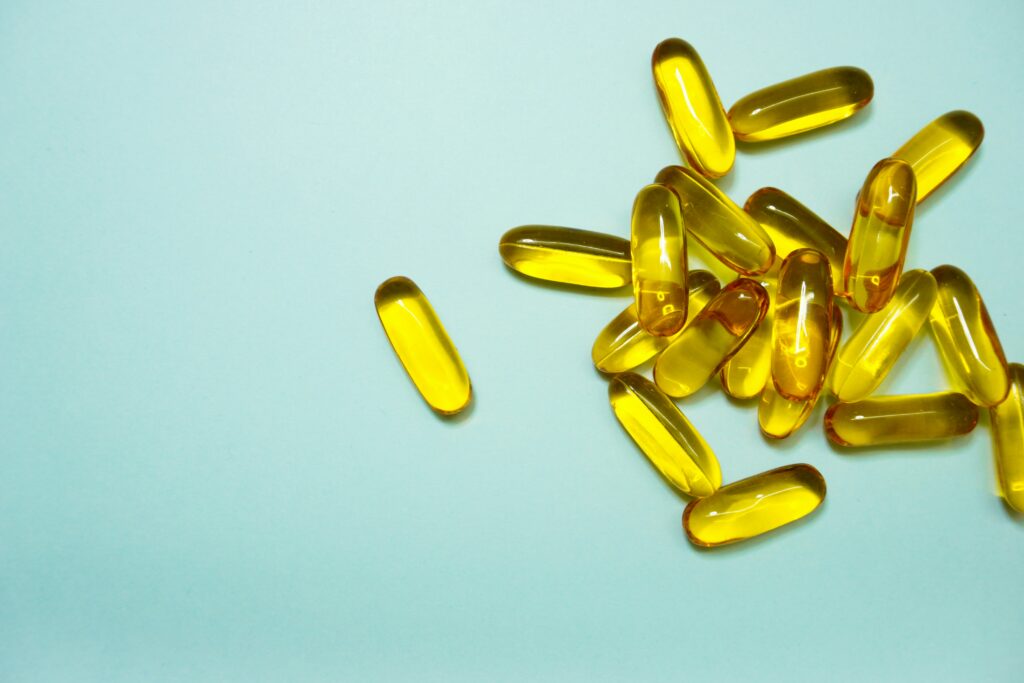Colecalciferol or cholecalciferol, also known as vitamin D3, plays an essential role in maintaining human health. It is involved in many biological processes, including the regulation of phosphocalcic metabolism, muscle function, and immunity. This unique molecule, classified as a fat-soluble vitamin, is distinguished by its dual origin: it is both synthesized by the body through sun exposure and provided by food .
1. Introduction
Cholecalciferol, a vitamin like no other
Vitamin D3 stands out from other vitamins due to its unique synthesis process. Unlike vitamins A, B, or C, which come exclusively from food, cholecalciferol can be produced by the skin under the action of the sun's UVB rays. This natural process makes this molecule a key player in public health management, particularly for populations living in areas where sun exposure is limited.
Why is this article important?
With studies revealing that approximately 80% of French people are vitamin D deficient, understanding its sources and roles is essential. This deficiency is often linked to modern lifestyles, marked by low sun exposure and sometimes unsuitable dietary habits. This article aims to provide clear and precise information on cholecalciferol, in order to help everyone better balance their intake and prevent deficiencies.

2. The essential biological roles of cholecalciferol
Regulation of phosphocalcic metabolism
Cholecalciferol plays a central role in regulating calcium and phosphorus levels in the body. It stimulates the intestinal absorption of these essential minerals, ensuring optimal mineralization of bones and teeth. This process is crucial for preventing conditions such as osteoporosis and rickets.
Together with parathyroid hormone (PTH), vitamin D3 maintains plasma calcium concentrations at constant levels, ensuring a vital balance for neuromuscular and enzymatic functions.
Supporting the immune system
Cholecalciferol is also involved in strengthening immune defenses. It activates certain immune cells, such as macrophages and T lymphocytes, which play a key role in fighting infections. Studies have shown a correlation between adequate vitamin D3 levels and a reduced risk of respiratory infections and other inflammatory diseases.
Benefits for muscle and joint health
Adequate cholecalciferol intake is essential for maintaining optimal muscle function. It prevents muscle weakness and reduces the risk of falls, especially in older adults. Vitamin D3 also helps reduce joint pain, improve mobility, and decrease local inflammation.
Cardiovascular and metabolic effects
Recent research highlights the protective role of cholecalciferol against certain cardiovascular diseases. It may help regulate blood pressure and reduce systemic inflammation, major risk factors for heart disease. In addition, it appears to play a role in the prevention of metabolic diseases such as type 2 diabetes, although further studies are needed to confirm these effects.
Are you looking for an analysis?

3. Sources of cholecalciferol: diet and endogenous synthesis
Foods rich in cholecalciferol
Some foods contain significant amounts of cholecalciferol, although these sources remain limited. Among the richest are:
- Oily fish : Salmon, mackerel, sardines, and herring are excellent sources of vitamin D3. For example, smoked herring can contain up to 22 mcg of vitamin D per 100g.
- Fortified dairy products : Some milks, yogurts and margarines are fortified with cholecalciferol to meet the recommended nutritional intake.
- Eggs : Egg yolk is a natural source of vitamin D3, with approximately 11.4 µg per 100 g.
- Cod liver oil : Although often associated with unpleasant taste memories, this oil contains up to 250 µg of vitamin D per 100 g.
- Specific mushrooms : Certain mushrooms such as chanterelles and girolles are rich in vitamin D, although they mainly contain ergocalciferol (D2).
Skin synthesis under the effect of UVB
The body is able to produce cholecalciferol from 7-dehydrocholesterol present in the skin, under the action of ultraviolet B rays from the sun. This ability depends on several factors:
- Intensity of sun exposure : Regular exposure of 10 to 15 minutes, several times a week, is generally sufficient to meet vitamin D3 needs, especially in people with fair skin.
- Skin pigmentation : Dark-skinned individuals require longer exposure due to melanin, which acts as a natural UVB shield.
- Climatic conditions : In winter or in regions with little sunshine, the skin's synthesis of vitamin D is greatly reduced, increasing the risk of deficiency.
- Age : With aging, the skin's ability to synthesize cholecalciferol decreases.
Limits of dietary intake and endogenous synthesis
Despite the diversity of vitamin D3 sources, meeting daily requirements through diet alone can be difficult. Furthermore, skin stores built up in summer may not be sufficient to survive the winter, especially in the elderly or those living in institutions.

4. Laboratory analysis of cholecalciferol
Importance of laboratory analysis
Laboratory analysis of cholecalciferol plays a crucial role in many areas, including:
- Nutritional Assessment : Identify vitamin D deficiencies in individuals.
- Food industries : Check the vitamin D content of fortified foods and food supplements.
- Medical research : Studying correlations between cholecalciferol levels and certain diseases such as osteoporosis or cardiovascular disorders.
Techniques used for analysis
Cholecalciferol analyses require highly accurate methods. Among the most common:
- HPLC-MS/MS : Liquid chromatography coupled with tandem mass spectrometry is widely used to accurately quantify cholecalciferol. It offers high sensitivity and can detect low concentrations, down to 0.03 µg per sample.
- HPLC-DAD : Liquid chromatography coupled with a diode array detector is an alternative used for simple matrices such as food.
- LC-MS : Liquid chromatography combined with mass spectrometry allows rapid and reliable analysis in research or industrial contexts.
Analytical protocol inspired by standards
The analyses follow standardized protocols to guarantee their reliability:
- Sample preparation : Samples must be packaged in waterproof and inert media to avoid any contamination.
- Internal method : Laboratories use internal standards to calibrate their instruments.
- Limits of quantification (LOQ) : Depending on the method used, LOQs vary from 0.03 µg/capsule to 6 µg/100 g for food matrices.
Limitations and challenges of analysis
Cholecalciferol analysis presents several challenges:
- Complexity of matrices : Foods rich in lipids require specific preparation to avoid interference.
- High cost : Equipment like LC-MS/MS involves significant investments for laboratories.
- Detection of inactive forms : Some methods can detect inactive metabolites, requiring expert interpretation of the results.




